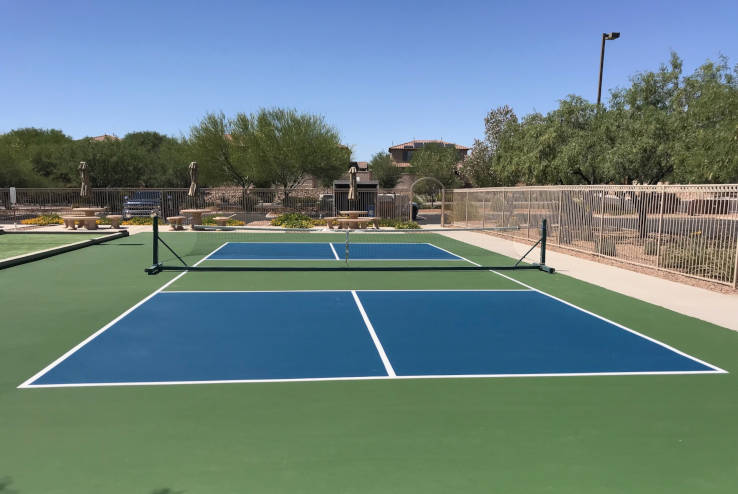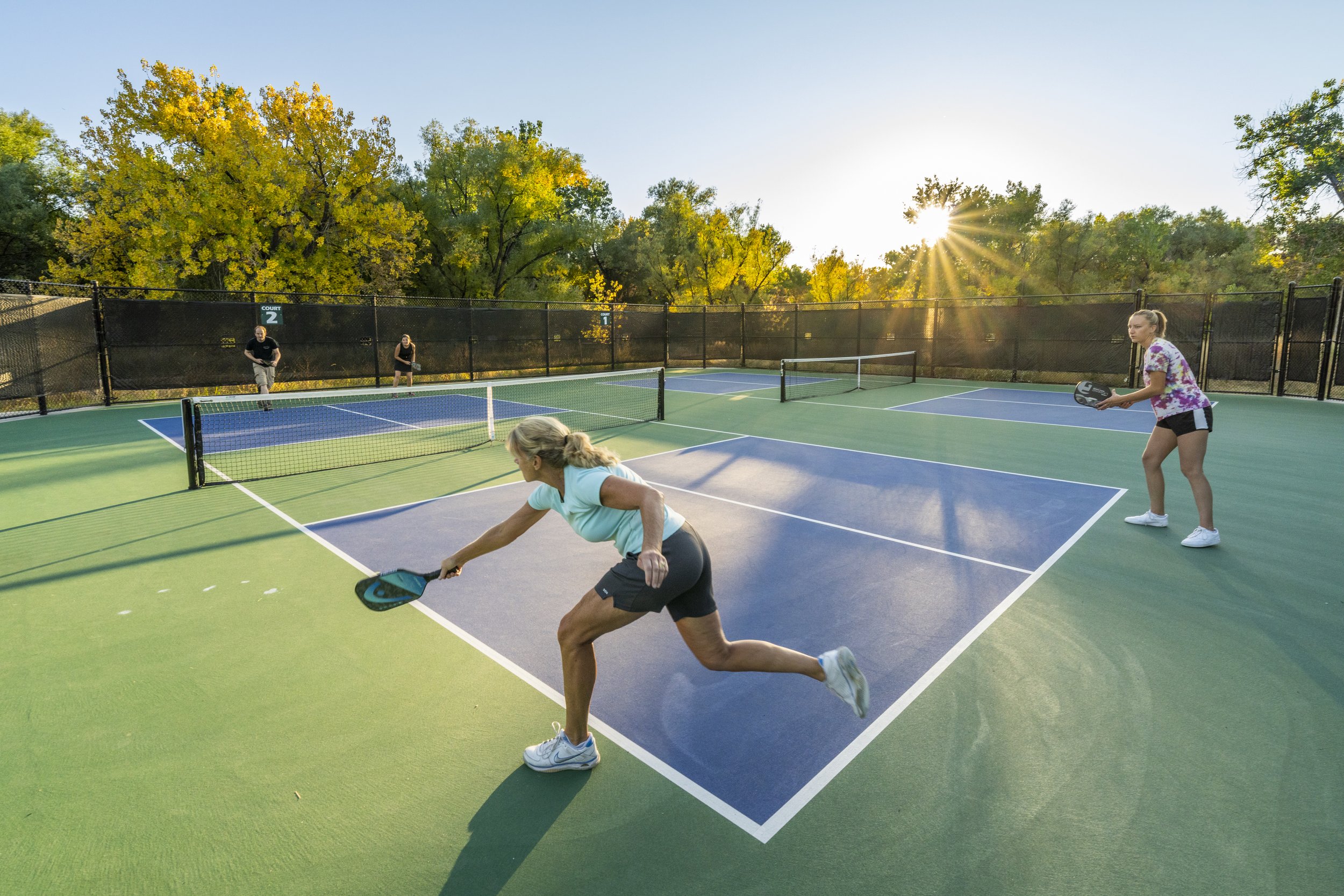Developments in Pickleball Court Construction: Trends You Should Know
Developments in Pickleball Court Construction: Trends You Should Know
Blog Article
Navigating Rules for Pickleball Court Construction in Your Location
Constructing a pickleball court in your area calls for a nuanced understanding of different neighborhood regulations, including zoning regulations, building licenses, and safety criteria. Each municipality enforces certain standards that can substantially affect the usefulness of your job. Engaging with neighborhood authorities and the community is vital for making certain compliance and fostering assistance. Nonetheless, navigating this regulative landscape can be time-consuming and intricate. What are the essential actions you should take into consideration to avoid potential mistakes and make sure a smooth construction process?
Understanding Regional Zoning Regulations
When thinking about the construction of a pickleball court, understanding regional zoning legislations is essential to making sure conformity and avoiding possible lawful concerns. Zoning policies determine how land can be utilized and commonly consist of specifications related to leisure facilities. These legislations can differ significantly by district, influencing elements such as court positioning, dimension, sound, and lighting degrees.
Prior to starting building and construction, it is essential to get in touch with the neighborhood zoning board or planning department to identify the certain regulations that relate to your home. Particular zones may limit recreational tasks, while others may need specific licenses or adherence to particular standards. It is likewise important to consider setbacks, which figure out how far structures must be from property lines or other buildings.
Additionally, exclusive growths, such as house owner associations (HOAs), might enforce their very own guidelines regarding the building and use of pickleball courts. Understanding these policies can protect against pricey modifications or litigation down the line. Involving with neighborhood stakeholders and community participants can offer beneficial understandings and foster support for your project, making sure that it straightens with the community's requirements and assumptions.
Getting Necessary Structure Allows
How does one navigate the intricacies of obtaining essential structure authorizations for a pickleball court? Normally, you will certainly need to submit a comprehensive site strategy that describes the suggested court measurements, products, and layout.

Once authorizations are acquired, it is critical to stick to any evaluation routines and needs throughout the building and construction stage. Keeping interaction with local authorities will certainly facilitate a smoother approval process and assistance stay clear of potential problems. By thoroughly preparing and recognizing the allowing landscape, you can successfully browse the intricacies included in creating a pickleball court while continuing to be certified with all neighborhood regulations.

Assessing Environmental Influence
A comprehensive assessment of environmental impact is important when planning the building and construction of a pickleball court. This evaluation assists identify possible effects on neighborhood ecosystems, water resources, and neighborhood looks. Secret elements to take into consideration consist of website choice-- making certain that the court is not built on ecologically delicate land, such as wetlands or habitats for jeopardized species
Dirt security and drain patterns should be assessed to stop disintegration and water merging, which could negatively impact bordering plants and wild animals. Additionally, the selection of products is crucial; choosing sustainable and green options reduces environmental harm.
The application of effective stormwater administration practices is another vital facet, as it aids minimize overflow and sedimentation. Involving with local environmental agencies can offer beneficial insights into policies and ideal methods details to your location.
Last but not least, neighborhood input can be beneficial in comprehending any kind of regional ecological issues and promoting support visit the site for the task. By carrying out a complete environmental impact analysis, stakeholders can make certain that pickleball court building and construction straightens with lasting methods and adds favorably to the neighborhood's environmental health.
Following Safety Specifications
Ensuring conformity with security requirements is crucial for the successful construction and procedure of a pickleball court. Sticking to well-known safety guidelines reduces the danger of injuries and crashes, ensuring a protected atmosphere for gamers.
Trick safety and security requirements include correct court measurements, surface products, and lighting requirements. The court must fulfill the main measurements of 20 feet large by 44 feet long for increases play, with ideal barrier zones to stop injuries from errant rounds. Pickleball court construction. The surface should be constructed from non-slip products to enhance grip and reduce the likelihood of falls
Additionally, lighting must be appropriate for evening play, providing uniform illumination to prevent shadows that can hinder presence. Local building regulations might additionally dictate certain demands for secure fencing and net height to make sure player safety and prevent unauthorized accessibility to the court area.
Normal assessments and upkeep are necessary to maintain these standards over time. By prioritizing security conformity, court proprietors not only shield gamers yet likewise promote a positive reputation within the neighborhood. This commitment to safety and security can urge higher involvement and pleasure of the sport, inevitably adding to its growth and sustainability.

Involving the Area in Planning
Community participation in the drawing board of pickleball court building and construction can significantly enhance the job's general success. Involving local residents and stakeholders promotes a sense of possession and encourages collective decision-making, which can lead to more comprehensive support for the initiative.
To efficiently entail the community, organizers need to initiate public conferences or Pickleball court construction workshops, providing a platform for citizens to articulate their viewpoints and choices relating to location, style, and services. Surveys and feedback kinds can likewise be made use of to gather insights from a larger target market, making certain that diverse perspectives are considered.
In addition, creating a neighborhood board of advisers can help with continuous discussions and address issues throughout the preparation procedure. This board can include representatives from various demographics, such as local colleges, leisure companies, and community organizations, thus intensifying area representation.
Reliable interaction is vital; updates regarding the task ought to be frequently shared by means of e-newsletters, social networks, or neighborhood notices. By prioritizing area engagement, coordinators can cultivate excitement, alleviate potential resistance, and produce a pickleball center that absolutely resonates with neighborhood worths and requirements. This collaborative approach not just enhances the project yet also strengthens neighborhood ties.
Conclusion
To conclude, browsing the complexities of pickleball court building requires an extensive understanding of neighborhood regulations, including zoning regulations, structure licenses, and safety and security criteria. Performing ecological analyses is important to reduce ecological impact, while area engagement can improve assistance for such projects. By adhering to these guidelines and fostering cooperation, successful execution of pickleball courts can be accomplished, advertising entertainment chances and area well-being. Proceeded diligence in these locations will certainly make sure sustainable and compliant growth.
Constructing a pickleball court in your location calls for a nuanced understanding of various local laws, consisting of zoning laws, structure permits, and safety standards.When taking into consideration the building and construction of a pickleball court, comprehending neighborhood zoning regulations is crucial to making certain conformity and avoiding prospective legal concerns. By extensively preparing and comprehending the allowing landscape, you can efficiently browse the complexities included in creating a pickleball court while continuing to be certified with click here to find out more all local policies.
In final thought, navigating the complexities of pickleball court building demands a detailed understanding of regional policies, consisting of zoning laws, structure licenses, and safety and security criteria. By sticking to these standards and promoting collaboration, successful application of pickleball courts can be accomplished, promoting recreational opportunities and community health.
Report this page